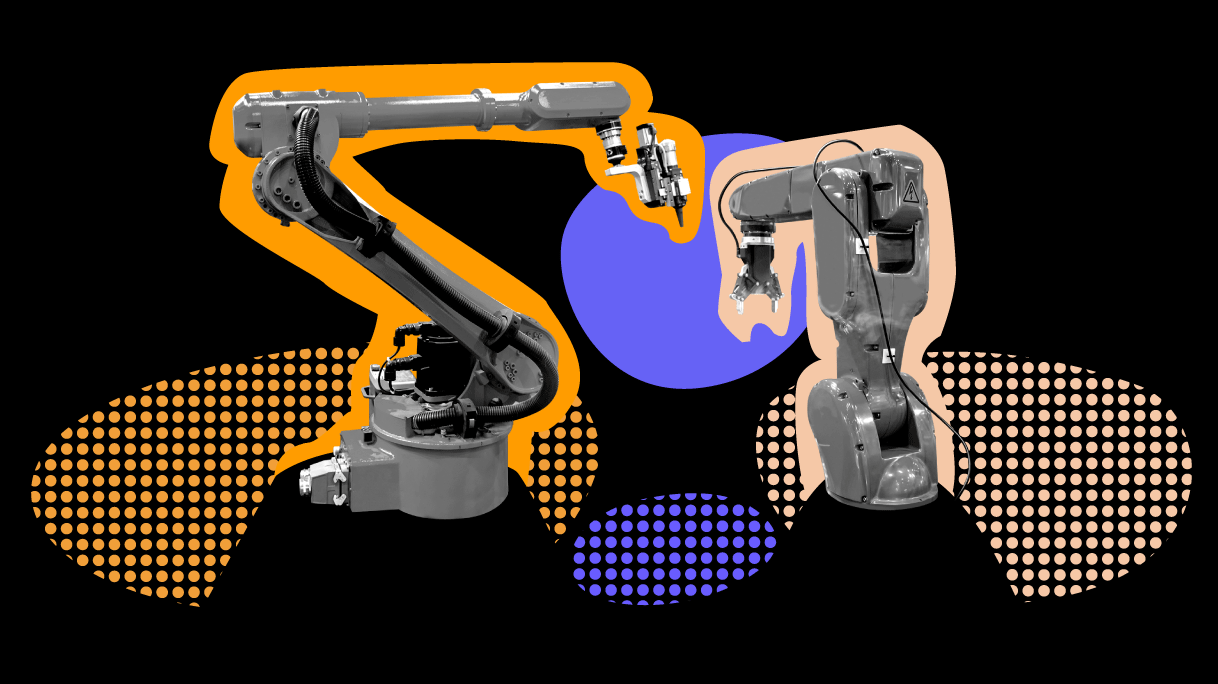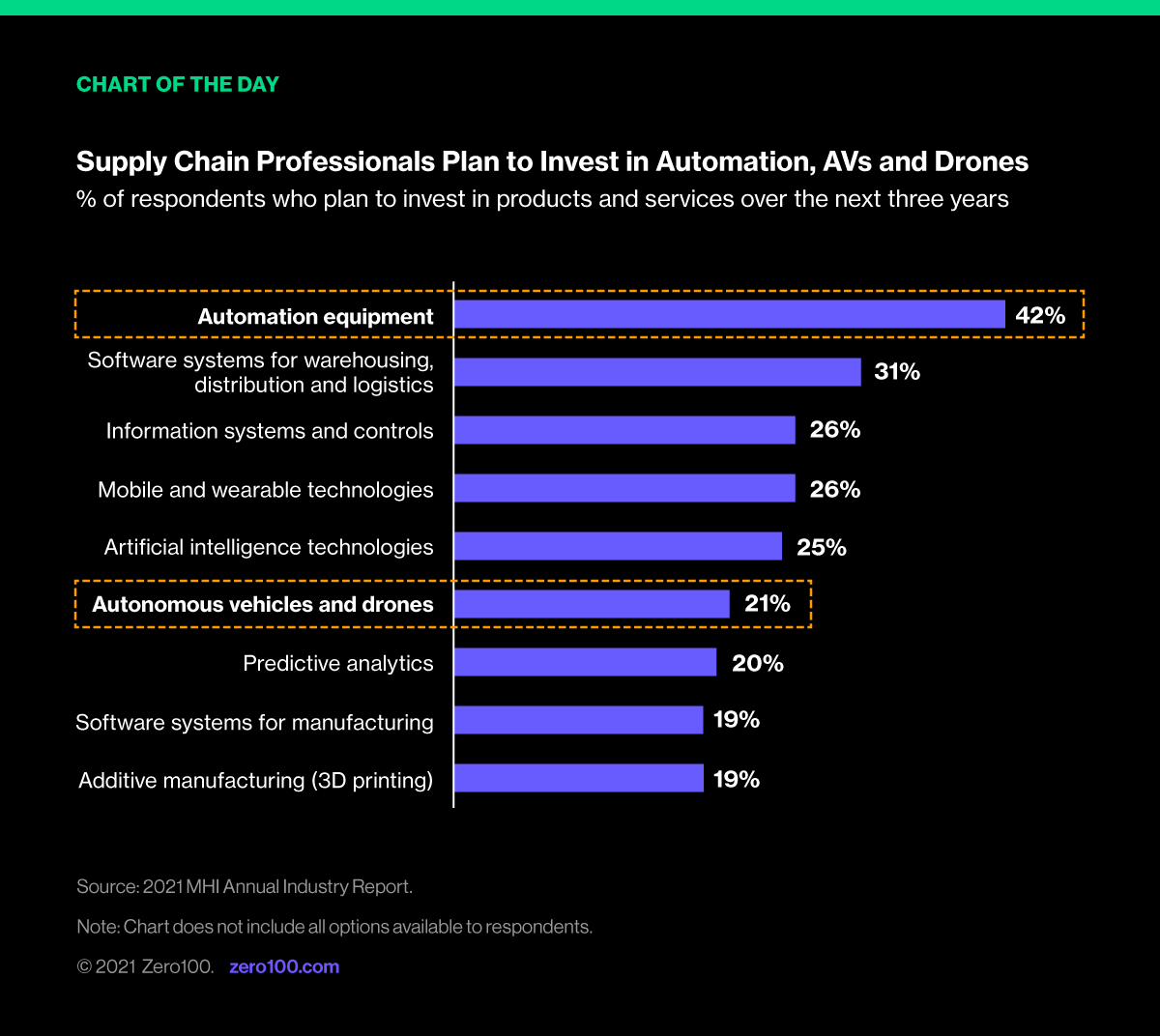
The Robots Are Coming! The Robots Are Coming!
With spending and implementation of robotics technologies exploding across the world’s warehouses and factories, what does this mean for supply chains, employees and how we build for a collaborative future?
Robots are coming. Taking over? Not yet, but with an estimated 600 thousand new industrial robots (30 million domestic robots) coming online each year, we're heading towards it...
So, What's Going On?
Labour markets have reacted to the double-edged sword of higher wages and fewer available workers with accelerating investment in technology and automation. Robotics is becoming more commonplace in both manufacturing and distribution environments. While only 25% of warehouses currently have automation in place, this is expected to greatly increase over the next five years. Robots are even affecting the design of new warehouses to better assist the automated process from truck to warehouse and transportation. Geographically speaking, Britain is actually ahead of the U.S. in this regard and invests 20% more on warehouse automation ($450,000 vs $375,000) per facility.
In one case, to combat packing and sorting shortfalls, Nike installed over 1,000 collaborative robots to supplement its human workforce to great success. Across most regions, Nike tripled its digital order capacity within the last two years. Robot/human collaboration clearly works and companies across industries realise this as they respond to the post-pandemic demand boom.
Automation also plays a key part in the move towards reshoring by slowly reducing reliance on Chinese manufacturing, effectively substituting short-term capital investment in technology for long-term wage appreciation abroad. Innovation (e.g., additive manufacturing, collaborative robots, lights-out manufacturing, etc.) is a useful by-product from this confluence of reshoring and automation as companies rethink how to make their products better in homegrown supply chains.
During the pandemic, Schneider Electric took advantage of its existing automation investments to shift production away from China to its ‘smart factory' in Lexington, KY. Now over 70% of parts required for its products are made locally – some are even exported to Schneider Mexico from Kentucky.
Robots = A Better Employee Experience?
Hopefully...
Automated assistance makes warehouse work safer, more efficient, less physically intense and, potentially, more interesting. This was essential during Covid to enable safe social distancing on factory floors. It has become even easier to integrate robots into supply chains to take care of those repetitive and tiring tasks. When correctly balanced, workers upskill when working in collaboration with robots. Employees can then spend more time on sentient, complex tasks, which can only be a good thing as newer jobs are created. Indeed, the WEF predicts almost 100 million new jobs will be created by 2025 due to automation.
But Not Necessarily.
MIT professor Daron Acemoglu finds that automation, robots and algorithms are responsible for over half of the last 30 years' economic disparities. As work homogenises, there are fewer tasks for humans to do, especially as continuing education, professional certifications, and vocational training are not anticipating a potential watershed event in active workforce participation. Businesses have increased spending on machinery versus employee wages, as well as benefiting from almost no tax on equipment compared to the 25% labour tax in the US for companies.
And this is before employees are removed from the equation altogether. Drones, driverless trucks and even trains are continual works-in-progress. Remote iron ore mines in Australia use automated trains successfully as they are far from public, trafficked areas, but they are yet to catch on more widely.
What's Next?
The takeover has begun. Robots drive such efficiencies that it is hard to see the trend ever reversing. More and more money is pouring into robotics start-ups as new technologies are constantly developed. One example is Exotec, a French robotics order preparation platform, that recently raised $335m for a $2bn valuation. Always one to make a big claim, Elon Musk thinks humanoid robot production could be even bigger than Tesla's car business. Considering Tesla's success in 2021 this suggests big things to come.
For firms wanting to experiment with automation, robots-as-a-service could be the easiest and most cost-effective option. This service-model approach is so popular that these revenues have now overtaken actual robot purchases. It remains to be seen which will be the preferred route to implement automation.
Before the complete rise of the robots, we must think about how to curate our relationship and regulation with machines to build a more equitable future. Better taxation, better policies and promoting education for workers can create a more symbiotic and productive workforce. As technology moves forward there must be a path for people to advance too.
One thing is certain though. The real winners of this – other than instant delivery obsessed customers – are the robot manufacturers and distributers playing in a soon to be $69bn industry.

Critical Reading
BUSINESS INSIDER
Salesforce Will Tie Executive Pay to DEI and Sustainability Goals
Commentary: Going forward, a variable portion of executive variable pay for EVP and above at Salesforce will be determined by four ESG measures, including increasing representation of Black, Latinx, Indigenous, and multiracial employees in the United States.
#diversity #sustainability #BHM
TECH CRUNCH
Intel to acquire Tower Semiconductor for $5.4B to build on custom foundry strategy
Commentary: Following GlobalFoundries' IPO in October, Intel announces one of its biggest acquisitions since McAfee (2010), addressing CEO Pat Gelsinger's IDM 2.0 strategy to diversify the embattled company's approach to semiconductor manufacturing.
#acquistions #chipshortage #IDM
ENGADGET
My iPhone knows my inside leg measurement
Commentary: TG3D studio has demonstrated a way to use the LiDAR array in an everyday iPhone in combination with AI to provide 250 body measurements, unlocking the potential to reduce apparel returns or accelerate custom-made garments from the convenience of your home.
#fashion #innovation #gamechanger